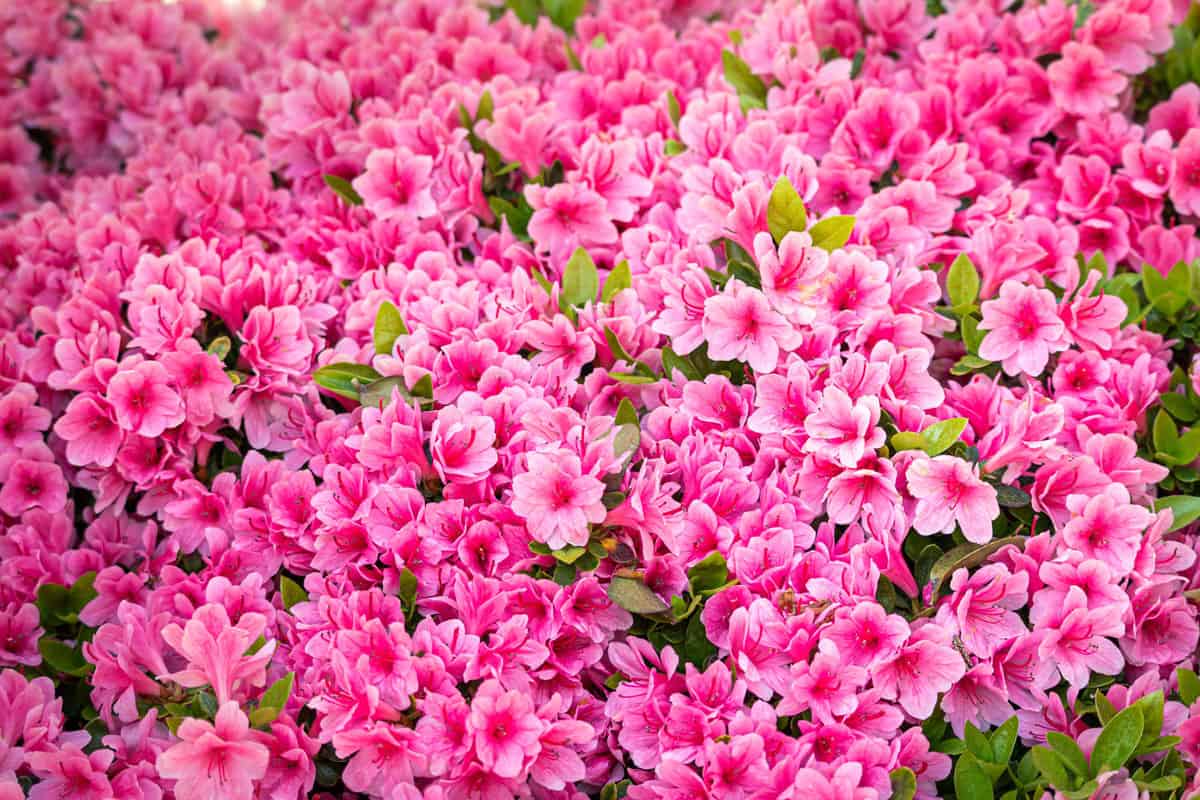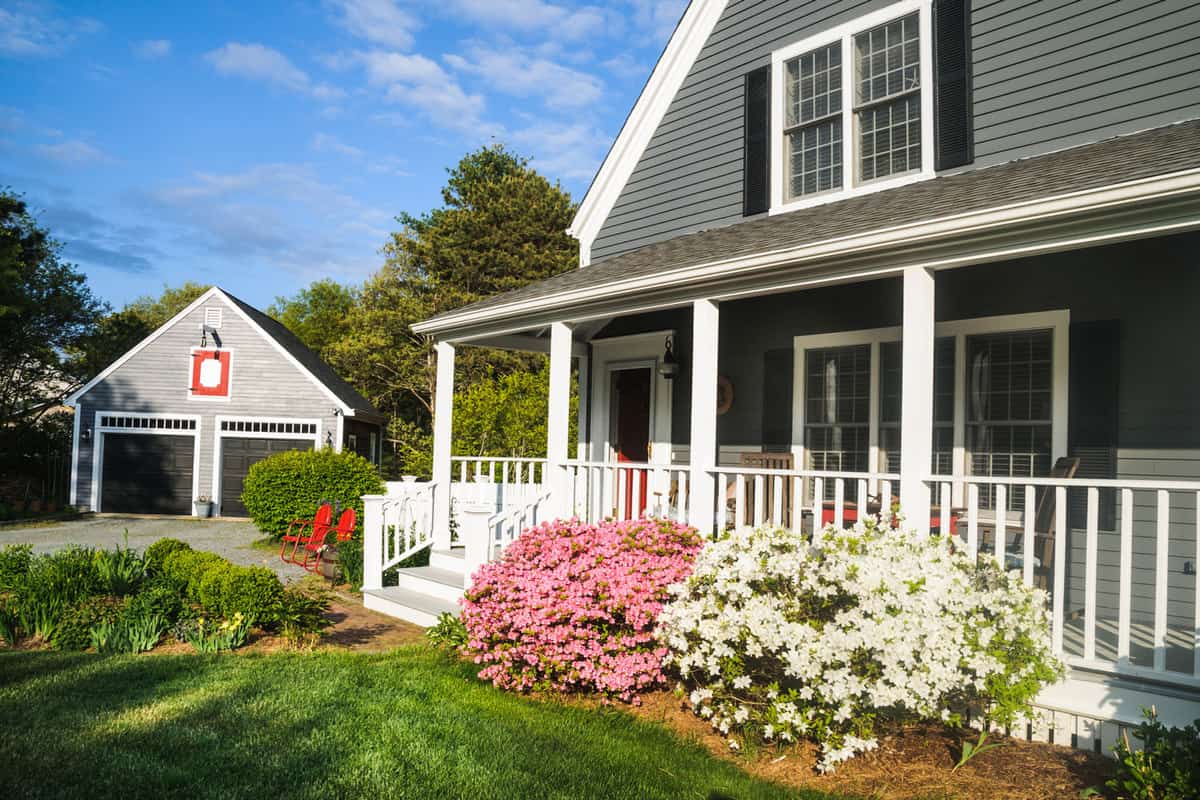Azaleas are known to be pretty carefree and easy-to-grow plants. However, it's important to note that they can be prone to health issues just like any other plant. So what do you do if your Azalea starts to die? We've looked into how to care for Azaleas and will answer this question for you.
There are a few common reasons why Azalea bushes may fall into a state of ill health and eventually die. These reasons include:
- Watering issues
- Fungal diseases
- Soil that's too alkaline
- Exposure to too hot temperatures
Understanding the environmental component that may negatively affect your Azalea is the first key to restoring it to health. It is possible, but it may take a bit of troubleshooting.
Many people grow Azaleas because they're beautiful plants that don't require much day-to-day maintenance. However, this doesn't mean that you can completely neglect them either. Continue reading to learn how to best care for your plant and how to possibly revitalize it if it's starting to die.

Reasons Why Your Azalea May Be Dying
Improper watering
Azaleas need frequent watering so that their soil stays moist. However, it's important to make sure that the soil is not oversaturated with water as this can cause its own set of issues. Note that these plants have a very shallow root system, and they're quick to show signs of drought. Watering is one of the biggest reasons why this plant may start to wilt or lose its vigor.
So it's best to develop a good regiment to keep the plant as hydrated as much as possible, especially if it's outdoors. For the most part, water the plant whenever the soil dries out. This typically means more watering sessions will be required in the summer months (anywhere from every 3 to 4 days) and maybe once a week during the fall and winter months.
Using the wrong kind of water

If you're watering your Azalea plant with tap water, this could also be the reason why it's dying. And if you notice the leaves of your plant turning yellow or believe that its growth has suddenly stunted, it could also be the cause of the plant's issues. These plants prefer acidic soil conditions with a pH of anywhere from 4 to 6.
This allows their roots to quickly and easily absorb nutrients. Tap water typically has a pH of around 7, which is too alkaline for these plants and can cause issues within their root systems. If your plant is dying, consider watering it with rainwater or spring water instead of water directly from your tap.
The roots are waterlogged
If your plant's soil is not draining well, the excess water can cause the roots to swell. And when it becomes too saturated, it'll likely develop root rot (aka Phytophthora). Once this fungal disease sets in, it can take a bit of effort to remove it.
Doing so will require you to remove the current soil and repot the plant. It'll also mean pruning it to get rid of any disease branches and leaves. To avoid this, make sure that you monitor the hydration level of the plant's soil to ensure that it has sufficient drainage holes at the bottom. Signs of roots that are waterlogged include leaves that are yellow, droopy, or wilting. And if the tree has root rot, you may also notice a foul smell coming from the soil.
Lack of nutrients in potting soil
Azalea plants need soil that is rich in nutrients. This is especially true for indoor plants more than garden-grown plants. The reason is that potted plants have a limited soil capacity. You'll likely need to add nutrients to your plant's soil. Otherwise, you may notice that it produces fewer blooms and growth that may be on the spindly side.
It's best to fertilize the tree in the springtime with slow-release and granular fertilizer. Doing so in early spring will prevent the fertilizer from stimulating growth at the expense of flowers that have already bloomed in the summertime.
Read more details about this plant pot on Amazon.
Too much or too little sunlight
Brown or dried-out leaves are a sign that your plant is receiving too much direct sunlight--which can be a common occurrence for Azaleas. Remember that these plants grow their best when they're in partial shade as opposed to full sunlight. Keep in mind that full sunlight will burn the tender leaves of this plant and cause them to become dry.
In return, you'll notice that fewer leaves and flowers are growing on your plant, and it will have a rather thin appearance. The key to growing a healthy Azalea is finding the perfect balance between light and shade for its environment. If you're growing your plant outside, consider placing it under the canopy to protect it from the harsh mid-day sun.
Indoor temperatures are too high

Temperatures that are too high can also cause an azalea plant to die. This is actually a common mistake with new growers of azalea plants.
When the plant is located indoors near a forced-air vent or radiator or outdoors during hot and dry weather, it can easily wilt and dry out within days. If you notice leaves curling up on your plant or the flowers beginning to droop, more often than not, it's because it's too hot. These plants can tolerate a wide temperature range of about 55 degrees to 85 degrees Fahrenheit.
Dieback Fungus
Another common reason your Azalea may be dying is dieback fungus. This fungus will cause the branches and leaves of the plant to turn brown while other branches appear perfectly healthy. Dieback is usually caused by underwatering, especially during times of extreme heat in the summer. However, it can also occur if the plant is exposed to heavy frost or shallow temperatures.
To mitigate the fungus, you'll need to remove any discolored or dead branches from the tree as well as her own any dead leaves. Be sure to sterilize your pruning shears with rubbing alcohol or diluted bleach to avoid spreading the fungus to other parts of the plant. Lastly, you'll also need to spray the plant with a fungicide that contains mancozeb or thiophanate-methyl to get rid of the infection.
Read more details about this fungicide on Amazon.
Why are my azalea leaves turning brown?
More often than not, the plant is experiencing dehydration. This can be caused by too much exposure to full sun or extremely warm temperatures daily. To mitigate this issue, it's best to move the plant to an area where it can receive only partial sun. Also, be sure to monitor and lower the temperature of its environment in addition to its hydration levels.
Why is my azalea wilting?
If the leaves are wilting, it's likely due to a watering issue such as over-watering or underwatering. It's best to water the plant when the soil has almost dried out. Otherwise, it may cause it to get waterlogged. Dryness can also be caused by too much sun.
What is killing my azaleas?
The most common reason why Azaleas die is hydration issues. This includes being underwatered, overwatered, exposed to too much sun, or extremely high temperatures for extended periods of time. If your Azaela is dying, you'll need to look at its environment to troubleshoot the factors causing the health issue.
Another common issue is related to the pH of the plant's soil. Make sure that it is somewhere between 4.0 and 5.5, which is the ideal range.
Read more details about this soil pH testing kit on Amazon.
Can my azalea be saved?

It depends on the severity of the plant's health condition. If the plant is too far gone, it may not be able to restore itself. However, if you act quickly and remove the factor that's harming the plant (and treat it effectively), you may be able to save it.
How do you revive a dying azalea?
Revitalizing a dying Azalea involves a step-by-step approach which includes the following:
- Removing the factor that's causing it to die.
- Ensuring that it has the and ideal environment.
- Pruning it if it has any dead branches or leaves.
- Monitoring the plant for several weeks and making environmental adjustments as needed.
What is the life expectancy of an Azalea?
A healthy Azalea can live anywhere from 30 to 50 years or more. This is provided that it's properly maintained.
Wrapping Things Up
If your Azalea is dying, it's best to determine the cause of the health issue immediately and then create a plan of action to mitigate it. The main thing to remember is that these plants can be sensitive to long hours of direct sunlight and need acidic soil to thrive.
Be sure to check out some of our other posts before you go:
How Much Water Do Arborvitae Need? [With Regards To Its Life Stage]



